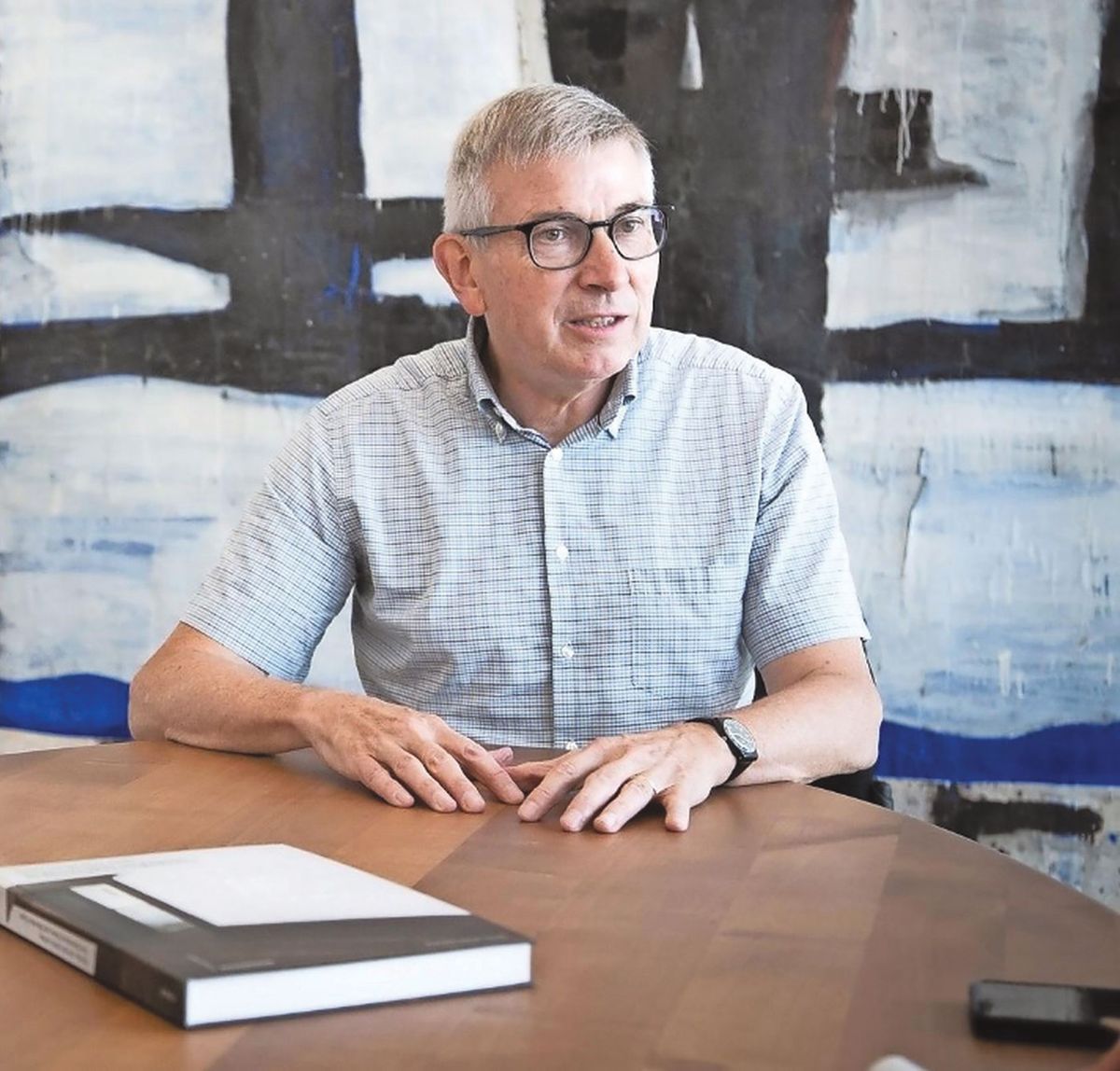Hans Furer, 66, is a Basel-based art collector and lawyer who is heavily involved in the city’s art scene and has a personal collection of around 200 works. In 1994, he co-initiated the acquisition of the Richard Serra sculpture that sits on Theaterplatz Basel and, for 15 years, was managing director of the Art Galleries Switzerland association.
Furer is now the managing director of the Im Obersteg Foundation (held at the Kunstmuseum Basel) and the Art for Tropical Forests foundation (founded by Ernst Beyeler). Alongside that, he is a member of the board of trustees of the Fondation Hubert Looser (whose works will be shown in the Kunsthaus Zurich’s new Chipperfield extension from October) and is involved in the Kunstmuseum Basel in numerous ways, including as treasurer of the Friends of the Kunstmuseum. In 2019, Hans and his wife Monika showed their collection at the Kunstmuseum Basel, and the couple permanently donated 23 works by the Swiss painter Rémy Zaugg (1943-2005) to the museum on this occasion. The Furer Collection comprises around 200 works.
The Art Newspaper: What was the first work you bought?
Hans Furer: In 1986, when I was 31 years old, I bought Akt im Spiegel ll (1980) by the German artist Rainer Fetting from Galerie Beyeler. I was fascinated by Neo-Expressionism and, at the time, I hated conceptual art.
What was your most recent buy?
A work by the Swiss artist Pia Fries, with whom we are friends. She lives in Düsseldorf, is a master student of Gerhard Richter and a professor in Munich.
Where do you keep your works?
Part of the collection is here in Basel, the other is in a historic house in the Swiss Jura mountains, where we can present our collection very beautifully across over 750 sq. m of living space.
If your house was on fire, which work would you save?
That’s a horror scenario! But I would save a work by [Japanese conceptual artist] On Kawara. For me, he is one of the most important artists of the second half of the 20th century.
Buy important paintings by important artists. But you have to find out for yourself
If money were no object, what would be your dream purchase?
As managing director of the Im Obersteg Collection, I would buy back Pablo Picasso’s Seated Harlequin (1923), which was sold in 1969. It is now in a private collection and was shown again for the first time in 2019 at the Kunstmuseum Basel.
What is the most surprising place you have displayed a work?
A young curatorial team from Zurich really wanted to show an important work by Rémy Zaugg in an insignificant place—I found this commitment great.
Which artists would you invite to your dream dinner party?
I’m not a party person... we are close friends with Thomas Ruff and Stephan Balkenhol, they would be invited. Also, Hans Holbein the Younger—by whom there are over 400 works in the Kunstmuseum Basel—I would have liked to have met him!
What’s the best collecting advice you have been given?
Buy important paintings by important artists. But you don’t know which are the important artists and the important works—you have to find out for yourself.
Which work do you regret not buying when you had the chance?
In 1995 I saw Andreas Gursky’s Engadin I (1995) at Art Basel [but did not buy it]. We love Sils Maria not only because the Engadin ski marathon is held there, but also because we have been spending our Christmas holidays there for 20 years.
If you could take one work from your collection into quarantine for company, what would you choose?
A work by Rémy Zaugg. He died much too early and was one of my best and most intellectually challenging friends.
What have you missed most during lockdown?
Our many and dear art friends from near and even more from far!


